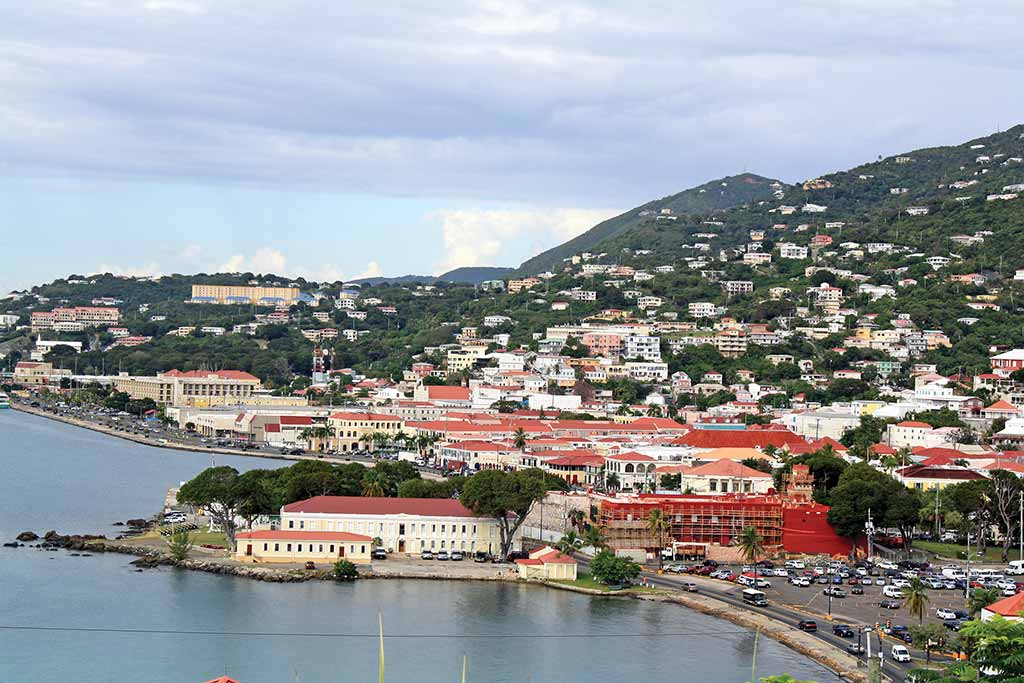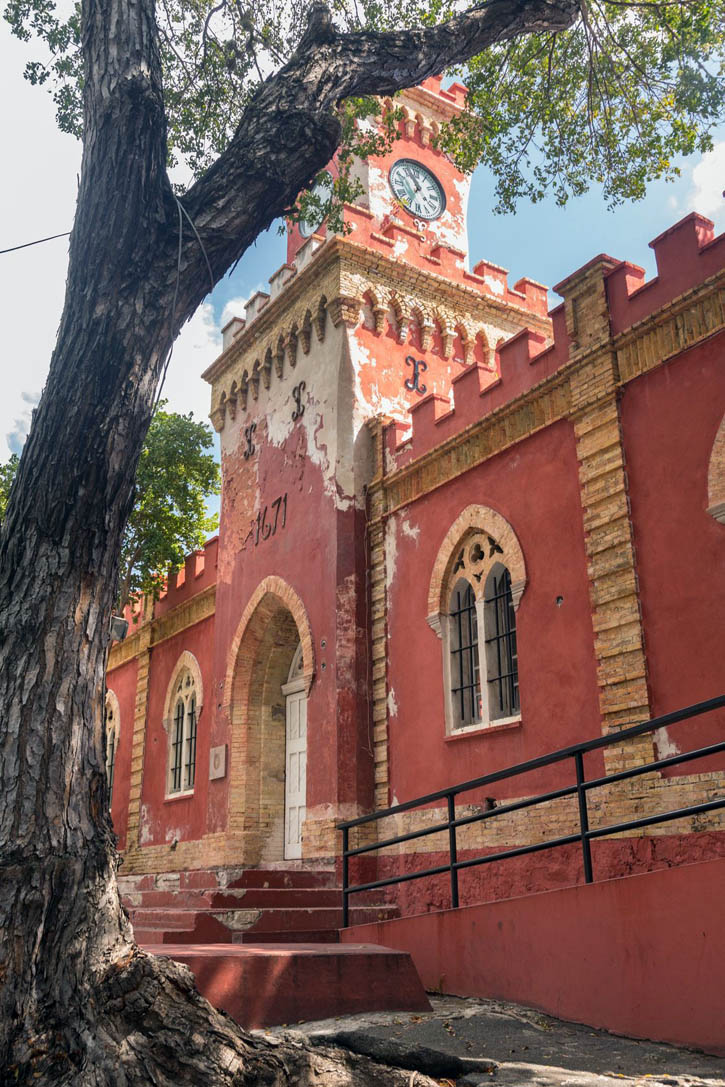The Danes divided Charlotte Amalie into three kvarters (quarters). Kongens Quarter, or King’s Quarter, is the oldest part of the city. Stretching from Bluebeard’s Hill in the east to Post Office Square in the west, this district housed the earliest government buildings, stately homes, churches, and the island’s first hospital.
Today, exploring the steep step-streets of Government Hill in the western environs of King’s Quarter is the best way to experience Charlotte Amalie’s historic charm.

Charlotte Amalie brims with history, thanks to its colonial-era townhouses and fortifications. Photo © Susanna Henighan Potter.
Examine a collection of antique furniture, historic artifacts, and photographs of old St. Thomas, and learn about the island from helpful docents, at the small St. Thomas Historical Trust Mini Museum (15B Norre Gade, 340/774-5541, 10am-2pm Tues.-Thurs., free). The St. Thomas Historical Trust sells a self-guided walking tour of Charlotte Amalie and, with advance reservations, offers guided walking tours of Charlotte Amalie ($30 pp). The museum is located in the Anduze House, facing FDR Park at the base of Government Hill.

A Victorian clock tower on Fort Christian in Charlotte Amalie, St. Thomas, USVI. Photo © Steven Heap/123rf.
The imposing redbrick Danish fortification known as Fort Christian, on the eastern end of the St. Thomas waterfront, is the oldest building in use on St. Thomas and a National Historic Landmark. Built between 1672 and 1680 by African laborers under the direction of Danish colonists and named for King Christian V of Denmark, the fort was the center of political and community life during the early years of Danish colonization of the Virgin Islands. The fort housed the governor’s residence, town hall, the court, and the jail, as well as the island’s first church.
Fort Christian houses a small museum. Under repair and closed to the public since 2005, the fort has of December 2015 not yet reopened for visitors.
The handsome cream-colored building across Veteran’s Drive from Fort Christian is the Virgin Islands Legislature Building. This building dates back to 1874, when the Danes erected it atop the site of a two-story wooden army barracks. It served as the Charlotte Amalie High School before it became the seat of the Virgin Islands Senate.
Catty-corner from Fort Christian is the inviting, shady square of Emancipation Gardens, built in commemoration of the end of slavery in 1848. A model of the Liberty Bell pays tribute to the Jamestown settlers who spent three days on St. Thomas in 1607 before resuming their journey to Virginia. Lignum vitae trees provide shade. Today, the gardens are a pleasant place to rest and people-watch. Public concerts and other events are frequently held in the gazebo.
Across the street from the park is the restored Grand Hotel, now the Grand Galleria, a complex of shops and restaurants. The hotel opened in 1840 as the Commercial Hotel and Coffee House.
Excerpted from the Sixth Edition of Moon U.S. & British Virgin Islands.